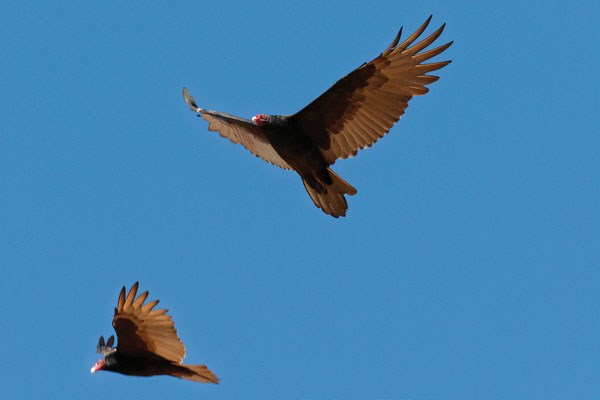Among Sunshine Coast birders the middle of March, the week from approximately the 12th to 19th, is perhaps the most eagerly anticipated week of the entire year. This is when the spring migration gets underway with the arrival of the first rufous hummingbird, the first yellow-rumped warbler and frequently the first violet-green and tree swallows.
As of the March 12, the only report of any of these species is a single tree swallow that was circling high over the Sargeant Bay wetland at midday on the 11th. The hummingbird and the swallows winter from Mexico southwards and their summer breeding range extends all the way to northern Alaska. Yellow-rumped warblers winter along the Pacific coast from southwestern B.C., through the U.S.A. and southwards into Central America. The early arriving birds on the Sunshine Coast may spend the summer with us or perhaps they still have hundreds of kilometres to fly to their final destination.
Another species that arrives in early March and is usually the earliest arriving migrant of the year is the turkey vulture. Barb Harrington reported the first one of the year in West Sechelt on the 4th, Robert Allen had the second on the 11th in Wilson Creek, and John Dafoe had the third on the 12th feeding on a dead seal at Vaucroft on Thormanby Island. Turkey vultures are common summer residents of the Sunshine Coast and can be seen riding the thermals on most summer days with their wobbly flight. Other identifying features for this species are the dihedral or V-shape of the wings in flight and the two-toned underwing pattern of light and dark. In flight vultures are easily distinguished from the similar-sized eagles by their V-shaped profile as opposed to the flat wing profile of eagles.
Springtime is not only indicated by the migration of birds but also by their song as male birds sing to attract a mate. The earliest songster of the year on the Sunshine Coast is Hutton’s vireo with its boring and repetitive “zu-weep” vocalization. More musical are the Pacific wrens and song sparrows that are in full voice right now. American robins are currently flooding into our area by the thousands and they are very vocal with their alarm calls and eventually their evening song. From now until the cessation of singing in late June to early July, listen to the songs of our avian friends. If you are really motivated, try learning to identify bird species by their songs and other vocalizations. It is a rewarding pursuit.
To ask a question or report a sighting contact
[email protected] or 604-885-5539.
Good Birding.



